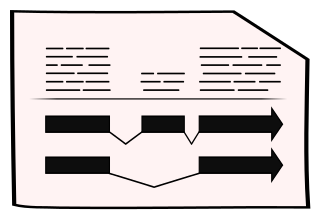Schistosoma haematobium
BioProject PRJNA78265 | Data Source The University of Melbourne | Taxonomy ID 6185
About Schistosoma haematobium
The trematode Schistosoma haematobium is one of the three major infectious agents responsible for the chronic debilitating disease schistosomiasis found throughout Africa and the Middle East and southern Europe. The intermediate hosts for the parasite are snails from the genus Bulinus and Physopsis and the definitive host is a human. This parasite invades the urinary system and bladder damage can lead to death.
There are 2 alternative genome projects for Schistosoma haematobium available in WormBase ParaSite: PRJEB44434 PRJEB44434
Genome Assembly & Annotation
Assembly
As described by Stroehlein, et al., 2022, the S. haematobium reference genome (designated Shae.V3 – representing the Egyptian reference strain) was assembled from data produced by Oxford Nanopore long-read and Hi-C sequencing and from previous long-read and short-read data sets produced using PacBio, Illumina or Dovetail technology.
Annotation
Gene models were generated using a pipeline incorporating MAKER2, EVM, and transfer from the previous "Shae.V1" gene set using liftOver and RATT. The annotation is described in full by Stroehlein et al., 2019. The gene-set presented here for the Shae. V3, was generated transferring 6277 high-confidence gene models (i.e. 67.4%) from Shae.V2 to Shae.V3, and inferred 3154 more genes based on evidence from mapped long and short RNA sequence reads from all key developmental stages and both sexes of S. haematobium, as described in full by Stroehlein et al., 2022.
Downloads
Tools
Key Publications
- Stroehlein AJ, Korhonen PK, Chong TM, Lim YL, Chan KG, Webster B, Rollinson D, Brindley PJ, Gasser RB, Young ND. High-quality Schistosoma haematobium genome achieved by single-molecule and long-range sequencing. Gigascience, 2019;8(9):giz108
- Young ND, Jex AR, Li B, Liu S, Yang L, Xiong Z, Li Y, Cantacessi C, Hall RS, Xu X, Chen F, Wu X, Zerlotini A, Oliveira G, Hofmann A, Zhang G, Fang X, Kang Y, Campbell BE, Loukas A, Ranganathan S, Rollinson D, Rinaldi G, Brindley PJ, Yang H, Wang J, Wang J, Gasser RB. Whole-genome sequence of Schistosoma haematobium. Nat Genet, 2012;44(2):221-225
- Stroehlein AJ, Korhonen PK, Lee VV, Ralph SA, Mentink-Kane M, You H, McManus DP, Tchuenté LT, Stothard JR, Kaur P, Dudchenko O, Aiden EL, Yang B, Yang H, Emery AM, Webster BL, Brindley PJ, Rollinson D, Chang BCH, Gasser RB, Young ND. Chromosome-level genome of Schistosoma haematobium underpins genome-wide explorations of molecular variation. PLoS Pathog, 2022;18(2):e1010288
Navigation
Assembly Statistics
| Assembly | UoM_Shae.V3, GCA_000699445.3 |
| Database Version | WBPS19 |
| Genome Size | 400,271,889 |
| Data Source | The University of Melbourne |
| Annotation Version | 2022-09-WormBase |
Gene counts
| Coding genes | 9,431 |
| Gene transcripts | 14,700 |
Learn more about this widget in our help section
This widget has been derived from the assembly-stats code developed by the Lepbase project at the University of Edinburgh











